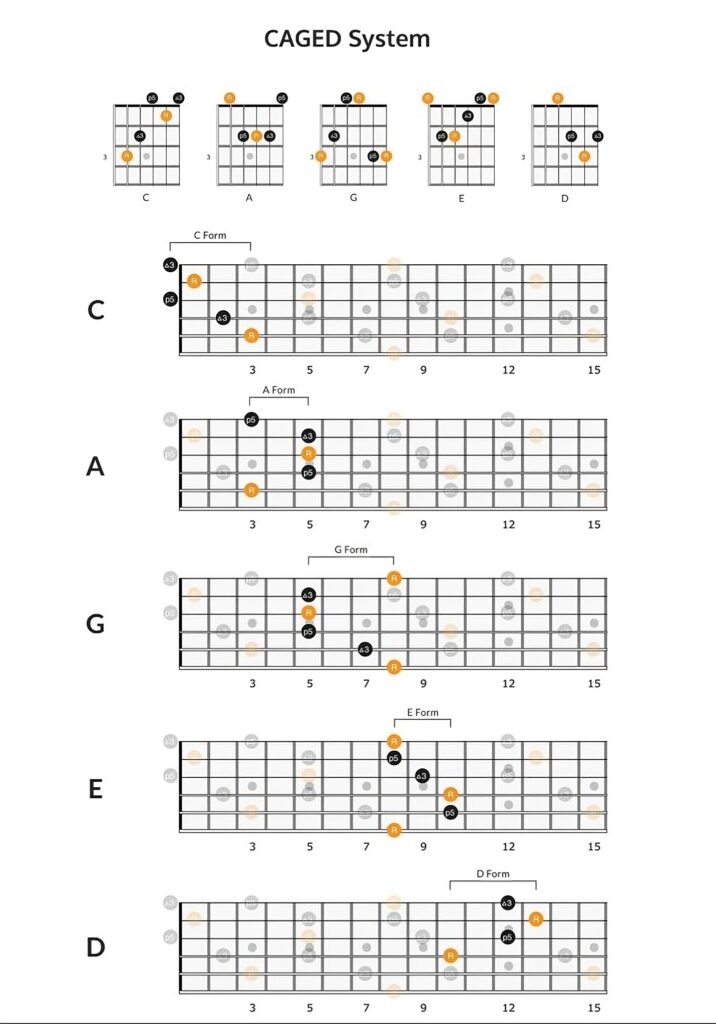If you’re just starting your journey into the world of guitar playing, mastering basic open chords is an essential first step. These foundational chord shapes form the backbone of countless songs across various genres, making them indispensable tools for every guitarist. In this beginner’s guide, we’ll explore some of the most commonly used open chords, including C, G, D, E, and A, and discuss tips for mastering them with ease.
1. C Major Chord:
The C major chord is one of the first chords many guitarists learn, thanks to its relatively simple finger positioning. To play a C major chord:
- Place your ring finger on the 3rd fret of the A string.
- Keep the rest of your fingers open, allowing the G, B, and high E strings to ring out.
Strive for clear and consistent notes across all strings, and avoid muting adjacent strings with your fretting fingers.
2. G Major Chord:
The G major chord is another essential open chord that offers a bright and vibrant sound. To play a G major chord:
- Place your ring finger on the 3rd fret of the low E string.
- Place your middle finger on the 2nd fret of the A string.
- Place your index finger on the 3rd fret of the high E string.
- Keep the D, G, and B strings open.
Focus on curling your fingers to avoid muting neighboring strings and maintain proper finger placement.
3. D Major Chord:
The D major chord is a versatile and widely used chord shape that adds warmth and depth to your playing. To play a D major chord:
- Place your index finger on the 2nd fret of the G string.
- Place your ring finger on the 3rd fret of the B string.
- Place your middle finger on the 2nd fret of the high E string.
- Keep the low E and A strings open.
Ensure that your fingers are arched and positioned close to the frets to prevent buzzing or muted notes.
4. E Major Chord:
The E major chord is a fundamental open chord that provides a solid foundation for countless songs. To play an E major chord:
- Place your index finger on the 1st fret of the G string.
- Place your middle finger on the 2nd fret of the A string.
- Place your ring finger on the 2nd fret of the D string.
- Keep the rest of the strings open.
Strum all six strings evenly and listen for a clear and resonant sound from each note.
5. A Major Chord:
The A major chord is a simple yet powerful chord shape that’s used in a wide range of musical styles. To play an A major chord:
- Place your index finger on the 2nd fret of the D string.
- Place your middle finger on the 2nd fret of the G string.
- Place your ring finger on the 2nd fret of the B string.
- Keep the low E string open.
Ensure that each finger is placed behind the frets and avoid pressing too hard on the strings, as this can cause unnecessary tension in your hand.


Tips for Mastering Basic Open Chords:
- Practice chord transitions: Spend time practicing smooth transitions between different chords, focusing on accuracy and speed.
- Use a metronome: Practice chord changes at a slow and steady tempo, gradually increasing the speed as you become more comfortable.
- Visualize chord shapes: Visualize the shape of each chord in your mind before placing your fingers on the fretboard to help improve muscle memory.
- Experiment with strumming patterns: Once you’re comfortable with basic chord shapes, experiment with different strumming patterns to add texture and rhythm to your playing.
By mastering these basic open chords, you’ll lay a solid foundation for your guitar journey and unlock the door to a world of musical possibilities. So grab your guitar, get practicing, and let the chords ring out loud and clear!
- Mastering the E Chord: A Beginner’s Guide to Guitar Greatness
- The Allure of the White Falcon Guitar: A Timeless Icon
- Enchanted Chords: The Musical Magic of Taylor Swift
- Striking a Chord: The Power of Music in Our Lives
- The Ultimate Guide to Trumpet Fingering Chart

